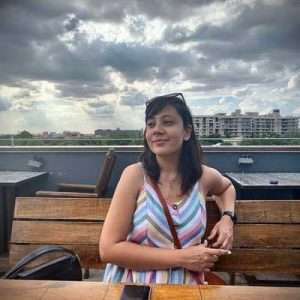On my first trip to Kochi, I was excited about backwater boat rides, fresh seafood and unadulterated spices. What I didn’t know was that my itinerary was going to change after the first pit-stop, sending me back to retracing the Spice Route, exploring the first Jew settlement in India and unearthing treasures.
The Mattanchery Spice Market, located in Jew Town, is not only an integral part of Kochi’s present times with its lanes lined with sacks of vanilla sticks, black pepper and cumin but also holds a prominent place in its history. The street ends in Paradesi Synagogue. It is the oldest active synagogue in the Commonwealth. It was built in 1568, almost 1,500 years after the beginning of the Jewish connection with Kerala. In the same vicinity you will find the Dutch Palace (built in 1555) which the Portuguese presented to the king with the hope of establishing trading relations with the kingdom.
I was intrigued. Our guide then told us about Muziris. Recent excavations reveal that along the Malabar coast, this was a thriving port on the Spice Route during the first century BC. Known to Romans and Greeks, it is mentioned in Indian classics like Sangam literature. Though still a blurred vision, it spreads over the Malabar coast and I found the best way to connect the dots – the backwaters. My first stop was Marthoma Church, located at the main entrance of the harbour. It is believed that the apostle, St Thomas, arrived here in AD 52, around the same time when the first Jews are believed to have travelled to Paravur.
Off the boat and on the road, I visited the Cheraman Juma Masjid, built in AD 629, which is believed to be the first mosque in India. When Cheraman Perumal, the then reigning king of Kerala, was convinced of his imminent death, he wrote letters to his relatives in Kerala among whom he had divided his kingdom before leaving for Mecca. When Malik ibn Dinar, famous for being the first to bring Islam to India, came here, he brought these letters. The rulers honoured them and permitted him and his fellow Arab Muslim traders to establish mosques. This was the first to be established. Next, I visited the Thiruvanchikulam Mahadeva Temple, a part of the king’s fortress that reflects harmony in cultural diversity over the ages.
Exploring further, I reached Kottapuram fort which was destroyed in 1340. Built by the Portuguese, it was an important centre of the Spice Route. Ships laden with gold and wine would pass along the Periyar river, exchange spices and then leave for Sri Lanka. The area for the Muziris Heritage Project spreads over 300 sq km. When the locals started building their houses they unearthed gold coins and artefacts, that reflected the presence of trade of a major port.
I then reached the current excavation site, Pattanam, which is now under the Kerala Council of Historical Research. The digging started in 2007 and they have a small museum that displays pots and jewellery—all those things that point towards the presence of a vibrant city.
 As the sun went down, I decided to head to Fort Kochi to witness the hustle-bustle in the harbour which opened for the ships. After paying a visit to the grave of one of the greatest explorers—Vasco da Gama—at St Francis Church, I walked along the coast. As the fort walls whispered stories of the Portuguese, Dutch, British and the Dutch East Indians, it was clear that no amount of time was enough to let this history unfold.*
As the sun went down, I decided to head to Fort Kochi to witness the hustle-bustle in the harbour which opened for the ships. After paying a visit to the grave of one of the greatest explorers—Vasco da Gama—at St Francis Church, I walked along the coast. As the fort walls whispered stories of the Portuguese, Dutch, British and the Dutch East Indians, it was clear that no amount of time was enough to let this history unfold.*
Kanika is a travel writer with a keen interest in history who’ll happily spend days wandering through lanes and ruins.
